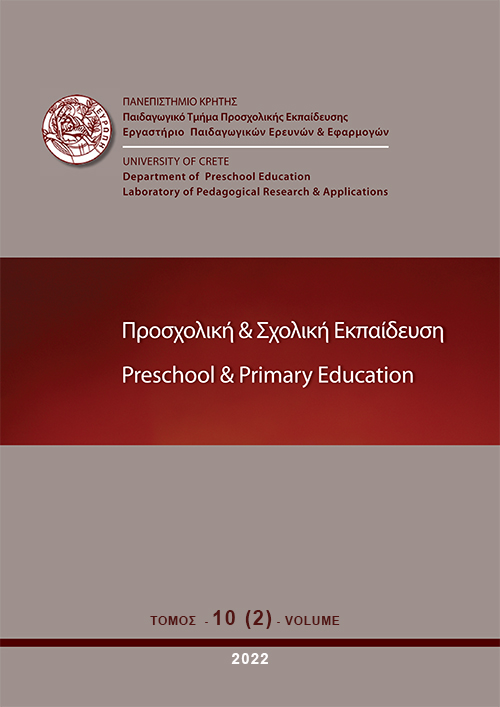Pedagogical relations and interactions during tidying up the pre-school classroom. A case study with the exploitation of Basil Bernstein's theory

Abstract
This study examines the pedagogical relations and interactions developed in a pre-school classroom during morning rituals when the teacher addresses the helpers and other children and/or when the helpers address the teacher and the children while the latter tidy up the activity centres. (All children are chosen to act has helpers in the classroom for a time – they may be responsible for tidying, assigning classroom tasks etc.) The study draws on Bernstein’s theory of codes and adopts a qualitative approach to its empirical data. Data was collected during five sessions via observation using a camera in a pre-school classroom with 22 children aged 4-6 years old; data was further completed with input from semi-structured interviews with the preschool teacher. The findings showed that relations between the teacher and the helper and the other children are strong, asymmetrical, and hierarchical. The relations of the helper with the rest of the children are weak. The teacher has total control over legitimate communication and interaction, offering guidance when the helper and the children have yet to acquire the necessary skills. The teacher also has more power with regard to knowledge compared to the helpers and the other children. The study also showed that apart from regulative and instructional rules, mainly of criteria and secondarily of pacing, the teacher’s pedagogical practices included messages about the acceptable behaviours of the students. The study further showed that there are firm boundaries in the communication practices and what is and what is not acceptable between the teacher and the helper and/or the children. Finally, the boundaries in the helper’s relations with the children are weak when the teacher has explicitly noted what is unacceptable behaviour.
Article Details
- How to Cite
-
Moumoulidou, M. (2022). Pedagogical relations and interactions during tidying up the pre-school classroom. A case study with the exploitation of Basil Bernstein’s theory. Preschool and Primary Education, 10(2), 196–220. https://doi.org/10.12681/ppej.27615
- Section
- Articles

This work is licensed under a Creative Commons Attribution-NonCommercial-ShareAlike 4.0 International License.
Authors who publish with this journal agree to the following terms:
- Authors retain copyright and grant the journal right of first publication with the work simultaneously licensed under a Creative Commons Attribution Non-Commercial License that allows others to share the work with an acknowledgement of the work's authorship and initial publication in this journal.
- Authors are able to enter into separate, additional contractual arrangements for the non-exclusive distribution of the journal's published version of the work (e.g. post it to an institutional repository or publish it in a book), with an acknowledgement of its initial publication in this journal.
- Authors are permitted and encouraged to post their work online (preferably in institutional repositories or on their website) prior to and during the submission process, as it can lead to productive exchanges, as well as earlier and greater citation of published work (See The Effect of Open Access).


